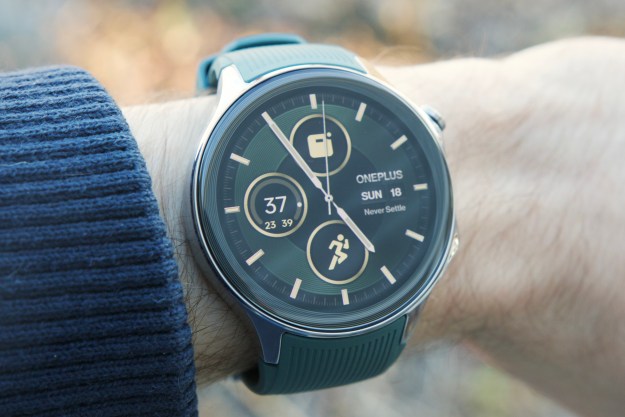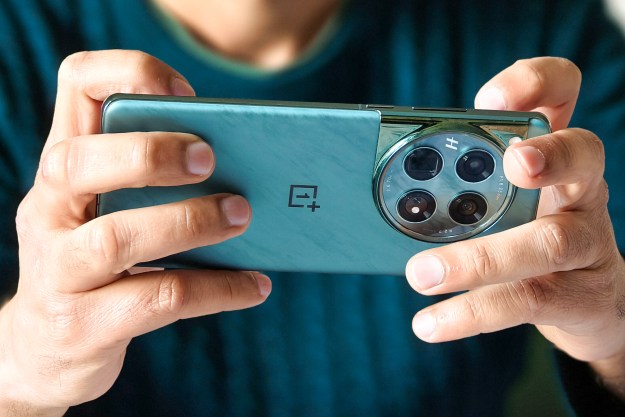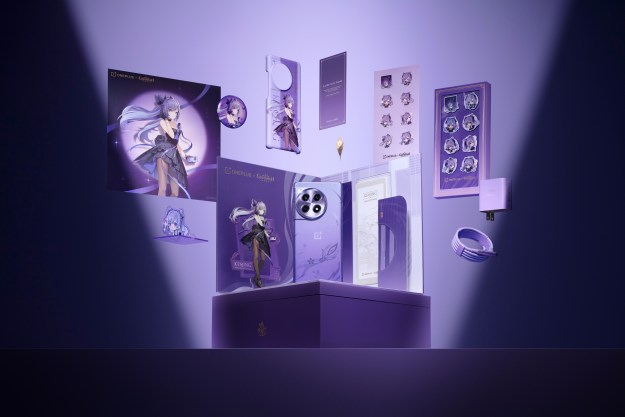I like smartwatches, I like traditional watches, and I like OnePlus smartphones, but I’m both excited and slightly skeptical about the OnePlus Watch. Announced alongside the OnePlus 9 and OnePlus 9 Pro, the OnePlus Watch will be available in April, and start at the very competitive price of $160, or 150 British pounds. It’s going to be round, have fast charging, and even come as a special edition, but it won’t use Google’s Wear OS software, and it sounds quite similar to other smartwatches.
I admit, I’m concerned about how it’s going to turn out.
What will it be like?
The OnePlus Watch is made of stainless steel, has two slim buttons on the side of the 46mm case, as well as a rubber strap, and comes in black. It looks like a watch, which is definitely a good thing. A 1.39-inch AMOLED screen with a 326 pixel-per-inch density is set under a 2.5D curved piece of glass.
In addition to the normal version seen below, there’s the Cobalt Limited Edition, which is a more upmarket model with a cobalt alloy case that’s tougher than stainless steel and hypoallergenic, too. A sapphire crystal covers the screen to give it a unique sheen, and add scratch protection. It has a leather strap attached to it.

What about the tech side? On the back is a heart rate sensor, and the watch can also measure blood oxygen levels. It has an IP68 and a 5ATM water-resistance rating, GPS, and a 402mAh battery that OnePlus claims will last two weeks on a single charge. The charging technology sounds unusual, with just five minutes on the charger apparently giving enough power for a day, and 20 minutes charging enough for a week of use.
The watch will track steps, calories, and distance traveled, along with more than 110 different workouts, and provide alerts for stress levels, rapid heart rate detection, and movement reminders. There’s 4GB of internal memory, with 2GB available for music, and it connects to your phone through the OnePlus Health app, which delivers notifications and calls to the watch. There’s also 50 different watch faces available.
What about the software?
If you think all this sounds good, you’re right — it’s all exactly what we expect a modern smartwatch to do. However, it’s going to do it without Google’s Wear OS software. Now, Wear OS isn’t fantastic, but there are distinct advantages for your smartwatch to use it, including access to Google Maps and Google Pay, apps from the Play Store, Google Fit, and tight integration with your phone for features like notification interactions.
OnePlus will use its own, as yet unseen, smartwatch operating system. While I’ve not seen or used it yet, I’m fairly sure it’ll operate in basically the same way as Wear OS, with swipes and taps, but no rotating bezel or cool circular menus like Samsung’s Tizen software on the Galaxy Watch 3, for example. Getting software correct on wearables is very hard. OxygenOS on the OnePlus 8 Pro is excellent, but it has had years to perfect it.
The first Amazfit smartwatches I tried had terrible software, and even Huawei — which has considerable developmental might behind its software efforts — took a while to make its smartwatch software decent. Going with Wear OS at the very least means stability and general reliability. Developing and introducing a brand new wearable software platform on a first-generation product doesn’t. Just look at the OnePlus One smartphone for proof.
All this makes me concerned the OnePlus Watch going to end up a visual clone of the Amazfit GTR 2 or GTR 2e, or a cheap version of the Huawei Watch GT2 Pro or Samsung Galaxy Watch Active 2, with new software that may be basic, or worse, unreliable.
What will make it different enough?
The Amazfit GTR 2 and GTR 2e are both very good, especially for the price, and if you’re happy to spend a little more the Huawei Watch GT2 Pro is a really high-quality smartwatch, particularly if you splurge for the Porsche Design model. Samsung’s Galaxy Watch Active 2 has one of the best smartwatch operating systems going, and OnePlus seems to have looked closely at the watch’s pretty design, too.

The world doesn’t really need another smartwatch that does basically the same thing as all these, and that doesn’t come with the general versatility of Google’s Wear OS software to give some reassurance. OnePlus’ fast-charging technology sounds excellent, and is a feature that does differentiate it from the competition, but when the battery lasts two weeks anyway, will having a 20-minute charge rather than an hour really make that much difference to life?

Perhaps more worryingly, OnePlus’ only other wearable, the OnePlus Band, isn’t all that different from the Xiaomi Mi Band 5, the Honor Band 5, or the legions of very cheap fitness bands available on Amazon. The OnePlus Band is an example of a company treating wearables as little more than a low-cost, disposable add-on purchase to exploit a dedicated fan base. OnePlus should be better than that, and I don’t want to see the OnePlus Watch as another example.
Please prove me wrong
I very much hope my cynicism is misguided, and the OnePlus Watch reflects everything that is good about OnePlus’ smartphones — one of the best phone user interfaces around, matched with high specs and excellent build quality. When I pick up the OnePlus 9 Pro, I’m reassured by its heft, and confident OxygenOS will do everything I want, often faster than the competition.
I look forward to trying the OnePlus Watch, and hopefully being proven wrong. If I’m not, unfortunately for OnePlus, there are plenty of other very good smartwatches eager for space on your wrist. The OnePlus Watch will be available from April 14 in the U.S., with European availability to be confirmed over the coming weeks.
Editors' Recommendations
- The OnePlus 12R is still one of 2024’s best smartphone deals
- I did a OnePlus 12 vs. OnePlus 12R camera test, and there’s a big difference
- OnePlus just fixed a big issue with the OnePlus Watch 2
- Don’t buy the OnePlus 12 — 6 reasons to wait for the OnePlus 13
- This new Android phone is one of the most stunning I’ve ever seen




